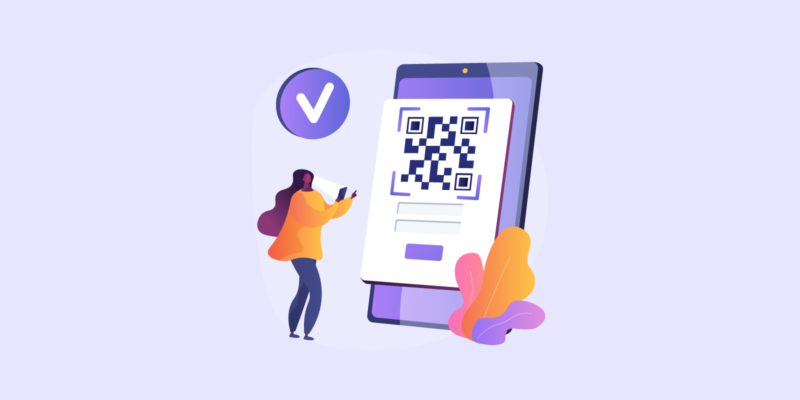Attracting new customers and clients is a constant challenge for B2B marketers, and 2020 has been a particularly difficult time for many businesses. If you’re looking to generate new leads, you might have heard the term “growth hacking”.
What is growth hacking, though? In a nutshell, it’s a form of marketing that focuses on driving growth for the business. In the context of B2B lead generation tactics, “growth” means generating more leads in order to make more sales. But growth hacking is about quality as well as quantity. In other words, you want to attract high-quality leads who are likely to stay engaged and ultimately buy what you have to offer.
So what are B2B marketers to do in an increasingly competitive landscape, at a time when many businesses are tightening their budgets? Read on and I’ll share my top growth hacking tips as ways to generate B2B leads. Hopefully they will help you keep growing your business for the rest of 2020 and beyond.
In this article
- 1. Build a guest posting strategy
- 2. Put social proof front and center
- 3. Hyper-personalize every communication with your prospects
- 4. Hyper-personalize your LinkedIn messages with dynamic GIFs to skyrocket Your reply rate
- 5. Make use of video content
- 6. Start a podcast
- 7. Put CRO first
- 8. Reward your clients for referring their friends
- 9. Work with influencers
- Over to you…
1. Build a guest posting strategy
I hope you understand the importance of blogging for your B2B company. If you haven’t started blogging yet, you really need to get started with a blog ASAP. Blogging not only provides tonnes of SEO benefits and increases your site’s organic traffic, it also demonstrates your expertise and provides additional value for your audience members. In other words, it’s an amazing inbound marketing strategy.
If you do have a blog, you should be thinking about pitching guest posts to other sites in your niche. Why? Guest posting is a form of content marketing, and it has several great benefits:
- It establishes you as a trustworthy and knowledgeable person in your industry
- It builds backlinks, improving your search engine rankings
- It brings new prospective clients to your site
Here’s how to do it:
- Identify relevant sites that have a Domain Rating of 50+ and get high monthly traffic.
- Send a polite email to the editor or owner, asking if you can write a guest post for the site.
- If you get a positive response, send in some relevant topic pitches.
- Write an amazing guest post.
- Rinse and repeat!
Here’s a guest post I wrote recently:
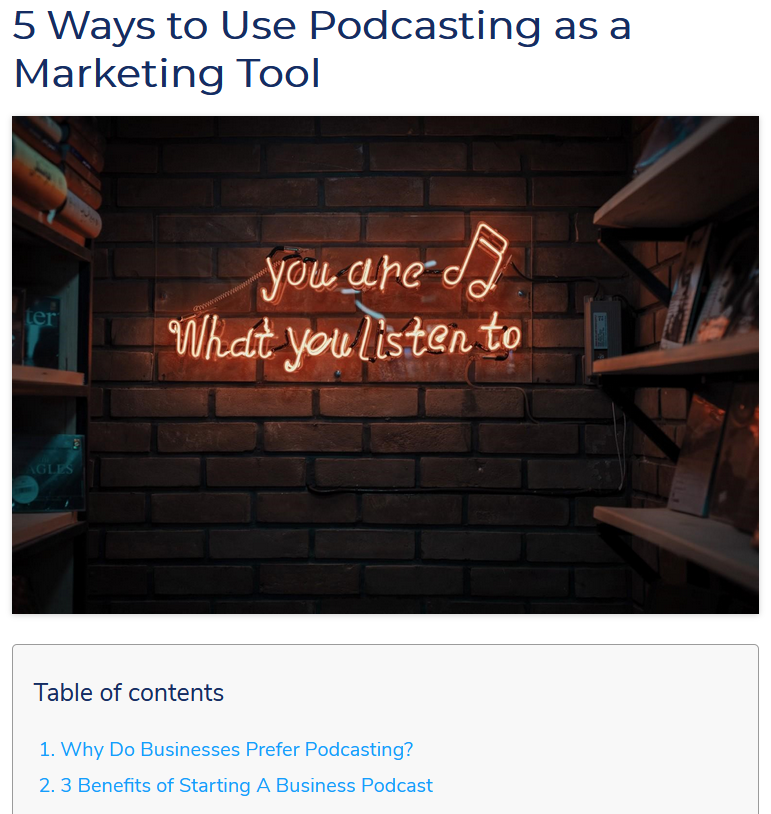
You’ll need to keep writing guest posts regularly and build a sustainable strategy. You can always outsource and hire a content ghostwriter to help you further down the line to build authority with topic-focused content.
2. Put social proof front and center
Social proof theory operates on a simple, proven psychological principle: people are more inclined to do something if they see others doing it. In this case, they’re more likely to take a chance on your business if they see that other people have used and loved your services.
91% of consumers read online reviews and testimonials, and 84% trust these reviews as much as recommendations from friends. The power of social proof works for effective lead generation for B2B companies just as well as it does for B2C providers. Make sure you utilize it in every lead generation channel you use.
If you’re not making full use of reviews and testimonials on your website, you’re probably missing valuable lead opportunities. Here are some ways you might want to use them:
- Add a reviews section on your “services” page.
- Display client testimonials prominently on your homepage.
- Display reviews and testimonials on any landing pages.
- Create your Google My Business page and ask happy clients to leave you a review.
- Create case studies for your blog.
You need to gain your prospects’ trust before they’ll consider becoming your clients. The best way to do that is to let your satisfied clients speak on your behalf.
Here’s now CB Website Design does it:
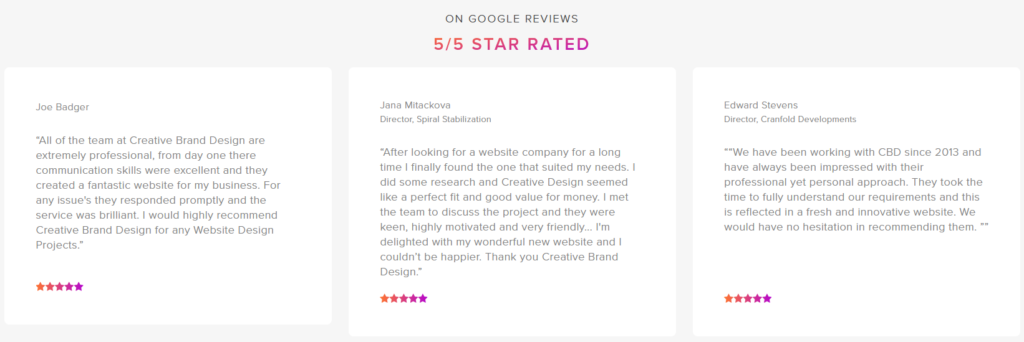
This carousel of five star reviews appears prominently on the company’s homepage.
3. Hyper-personalize every communication with your prospects
Personalization is no longer an option in marketing – it is now an essential. Why? Because potential customers want to feel as though you are communicating with them personally. The statistics back up this idea – 83% of business buyers value personalization:

Therefore, make sure you personalize every single touchpoint and every stage of the customer journey from the first time the client hears about you to the moment they sign on the dotted line, and beyond.
Here are a few ways to do that:
Segment your audience
Marketers today have a nearly endless pool of data to tap into, if they just learn how to use it. You can segment your audience based on their behaviors, from purchasing habits to how they interact with your content across various platforms.
You can also segment according to various demographic data. For example, you’re likely to target the owner of a small, local business in a different way to how you’d target the CMO of a Fortune 500 company.
Many of the email marketing providers available today offer sophisticated customer segmentation and analysis capabilities. As soon as a prospect enters their contact information and signs up for your email list, you should segment them in your CRM according to demographics and/or behavioral data. You can then market to each segment accordingly, sending them appropriate product and service recommendations, pieces of content, and special offers.
Leverage conversational marketing with AI
Chatbots are an incredible piece of modern artificial intelligence (AI) technology. By installing a chat plugin on your website, you can start a conversation and start getting to know your prospects the moment they land on your site.
Here’s an example:
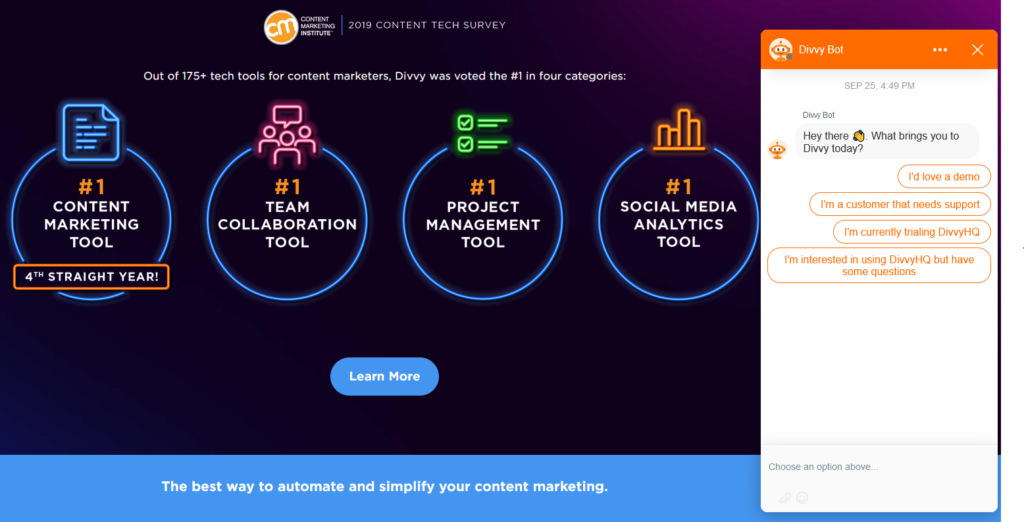
Divvy HQ is a content marketing tool. As soon as potential leads land on the website, they’re greeted by “Divvy Bot”, the friendly little chatbot asking how it can help you.
Hyper-personalize your sales funnel to double your conversions
As humans, we are hardwired to process images in milliseconds. When we add personalised layers, it triggers pattern interrupts that cannot fail to grab the recipients’ attention. Images are inherently portable and can be used in all our digital marketing channels, even when you’re using complete marketing automation. Use them in your marketing emails, automated LinkedIn messages, website, chatbots, PPC ads, and videos.
Images matter even more than text when it comes to digital communication. That’s because our brains notice visuals first. We process them in less than 13 milliseconds, according to this MIT study. Therefore, make the most of visual content with images, infographics, charts, graphs, and so on.
Using personalized images to trigger pattern interrupts in your sales process will typically improve conversions up to two or three times over. With the personalization remarketing growth hack, you can create remarketing ad campaigns with personalized images and increase your cold email signups up to sixfold.
Example for Image Personalization in Retargeting Campaigns on Facebook after leads visited your website (using their profile images and your company logo):
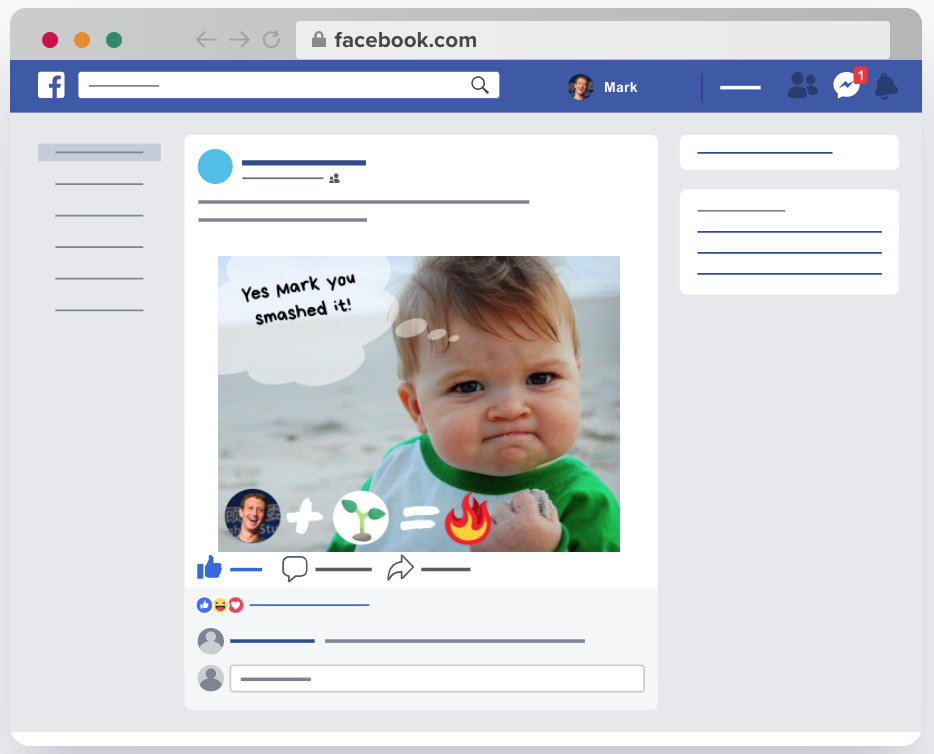
Or catch your prospect’s attention and invite them to a (virtual) coffee date with their name on the mug:

Creative ideas are unlimited:
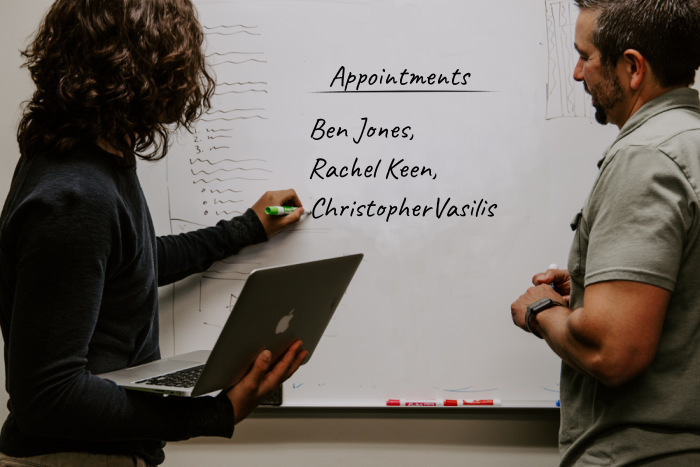
4. Hyper-personalize your LinkedIn messages with dynamic GIFs to skyrocket Your reply rate
On average, a post that contains a GIF receives 20% more engagement for a B2C brand and 10% more for a B2B company. Posts with appealing, engaging, and simple GIFs increase brand awareness, engagement, and conversions. Tweets with GIFs get 167% more clicks than those with standard images. Besides using GIFs in social media, it works also great to use them in B2B outreach. You need to be careful to stay professional and not to be too creepy with your messages, though! Never cross that line.
The sales team of Expandi used very creative B2B approaches, making use of hyper-personalized gifs in their LinkedIn outreach. They reached an unbelievable 72% acceptance rate and a 40% reply rate to the follow-up. With hyper-personalization, they added the name and the profile image of the prospect to the animated GIF. This even works for outreach on a scale.
Here’s an example of a hyper-personalized LinkedIn Message:
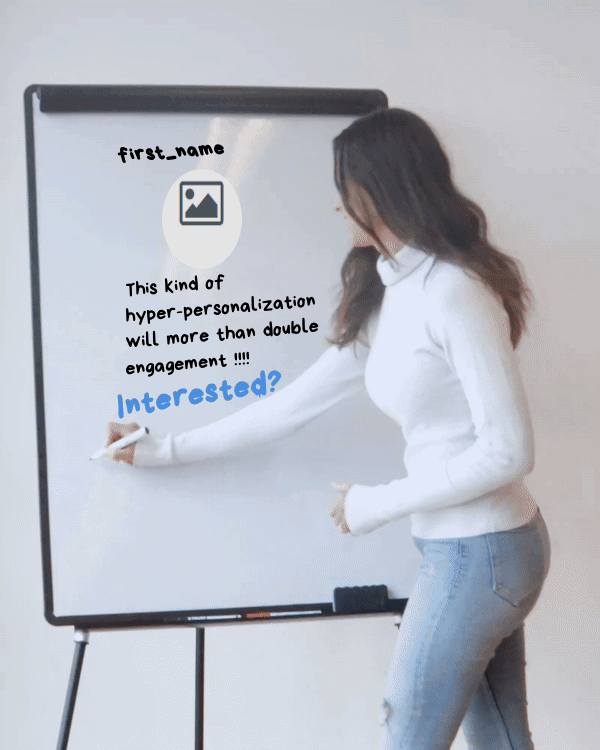
- Pay attention to personalization – can’t stress this enough. The more details you can include about your prospect, the better.
- Research your prospects in-depth – Great research will not just help you personalize your templates better, but also allow you to connect with them better. For example, if you know they watch Game of Thrones or are a Chicago Bulls fan, you can use that to build initial engagement and find common ground.
- Hyper-target your audience for better results. The more you have in common with your audience the better. You can scrape influencer posts and Facebook groups for this.
- Drive engagement – include humor in your outreach messaging to help make sure you get a reply.
- Use hyper-personalized images NOW! Personalized images are working right now, but who knows for how long? Right now, barely anyone is using them – so it’s your opportunity to be an early adopter and reap the benefits before it’s too late and before everyone starts using them.
- Be funny – No one likes snobs and boring people! Use humor to catch your leads’ attention and stand out.
- Use clear CTAs. Always write your outreach templates so that your prospect will know what to do next. If they don’t know, they won’t bother to reply and are more likely to see you as spam.
- Write about them, not about you. If you write about them, people will be more engaged with your follow-ups. If your message is all about you, they’ll ignore it.
Little details matter
Great client care and customer service is about the small details as much as the big things. When it comes to personalization, for example, you must always remember to use the individual’s name in both the subject line and greeting of every single email communication you send.
Campaign Monitor reported that customers are 26% more likely to open an email if the subject line is personalized. There is no room for generic B2B marketing communications in 2020!
Do your research
Congratulations! You’ve piqued the prospect’s interest in your product or service, and they’ve agreed to a discovery call, sales meeting, or virtual product demo. But getting the meeting is just the first step. Now you need to wow the prospect.
That means you’ll need to go into the meeting knowing as much as you possibly can about them. Learn what their business does, what their job function is, and what systems or tools they’re currently using. You should also do everything you can to understand their needs, desires, business goals, and pain points. Then you can use that information to show them how your product is the answer to their problems.
Remember: a sales meeting isn’t about you or your product. Keep the focus on the prospect and what you can do for them at all times.
5. Make use of video content
The power of video marketing cannot be denied. Did you know that video content is expected to make up over 80% of all internet traffic by 2022? If you’re not already leveraging video in your B2B lead gen efforts, you must get started ASAP.
Not sure what type of video content to produce? Here are a few ideas to get you inspired:
- Offer informational or training videos as lead magnets. This will entice website visitors to join your mailing list, bringing them into your sales pipeline.
- Start a Youtube channel where you talk about subjects related to what you do. For example, if you sell a marketing SaaS platform, why not make a video series on current and upcoming marketing trends?
- Share product demos and how-to content related to different aspects of your product. When prospects see how easy and intuitive it is to use, they’ll be more likely to take a chance on it.
- Create personalized video funnels and get open rates well over the 80% range like the Team of Design Pickle
- Create a montage of short video testimonials from your customers.
- Host webinars to engage with your audience in real time.
Here’s an example of a great video marketing campaign from a B2B company:
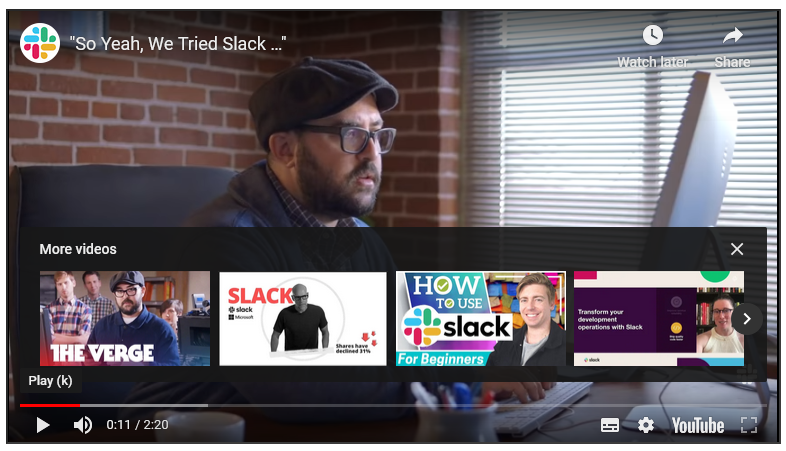
Slack sells team collaboration software. In this short video, irreverently titled “So Yeah, We Tried Slack…”, the client shares a story about being reluctant to use the tool at first, but gradually coming to love it. The result is a testimonial video with a difference and one that comes across as highly authentic.
Pro tip: don’t worry if you don’t have the resources to create professionally filmed and edited videos. On-the-fly video content can be just as powerful, particularly if you’re going to be using it on social media. Most smartphones can shoot video of a high enough quality.
6. Start a podcast
Podcasting – a form of pre-recorded downloadable audio show, similar to talk radio – is tremendously popular. But did you know that you can also use your podcast for generating leads, engaging prospective clients, and making sales?
The key is this: provide value to your audience. Your podcast can take a number of formats – storytelling, interviewing key figures in your niche, sharing how-to tips, and so on. But you must ensure that every episode speaks to your target audience and provides them with actionable takeaways and useful information.
Starting a podcast is fairly easy and inexpensive. You’ll need a microphone, an editing software solution, and a hosting service (please read my blog on this) to distribute your show. Tools like bounceapp can help you record, edit, and publish your podcast, or you can always outsource the editing part if you prefer.
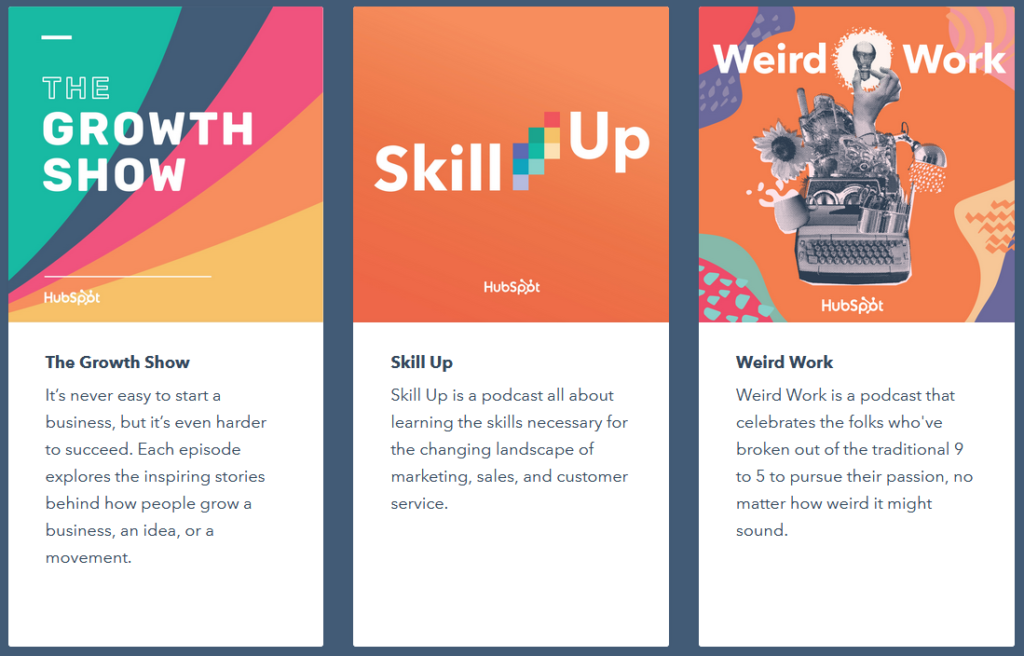
Hubspot, one of the world’s most popular and best selling marketing platforms, produces several podcasts that speak to different segments of the company’s target audience (pictured above). But you can probably start with just one!
Don’t forget to nudge your listeners towards your website at the end of each episode and include links in your shownotes. You could also sweeten the deal by offering a special discount or freebie to your podcast listeners.
7. Put CRO first
Attracting lots of visitors to your website is great, but only if you can convert them into viable qualified leads and, eventually, into customers. Therefore, you must focus on conversion rate optimization (CRO) if you want to see great results.
Here are a few CRO tips that B2B marketing teams will want to bear in mind:
- Try out different ways of phrasing your call to action (CTA). In one experiment reported by VWO, changing the CTA slightly gained 62% more conversions for their client. You can take this even further with personalized CTAs.
- Optimize your site for load speed. Nearly half of all users abandon a site if it takes more than 3 seconds to load.
- Keep your copy succinct, professional, and free from spelling or grammatical errors.
- Use great images on your homepage and landing pages. Stock photos won’t cut it.
- Ensure your site and any landing pages are mobile responsive. Around 50% of all web traffic now comes from mobile devices.
CRO is complex and is sometimes a matter of trial and error. Therefore, you should set aside the time and budget to try things out, monitor your metrics, and track the results. A/B tests will allow you to try out different versions of each aspect of your site. When you see which ones get the best results, you’ll have a better idea of what you need to do in the future.
8. Reward your clients for referring their friends
A referral program rewards existing customers for sending new prospects to your company. For example, if one of your clients refers a friend who books a consultation with you or requests a proposal, you might reward that existing client with a freebie, discount, or other token of thanks.
Here’s how Zoho, an email provider, did it:
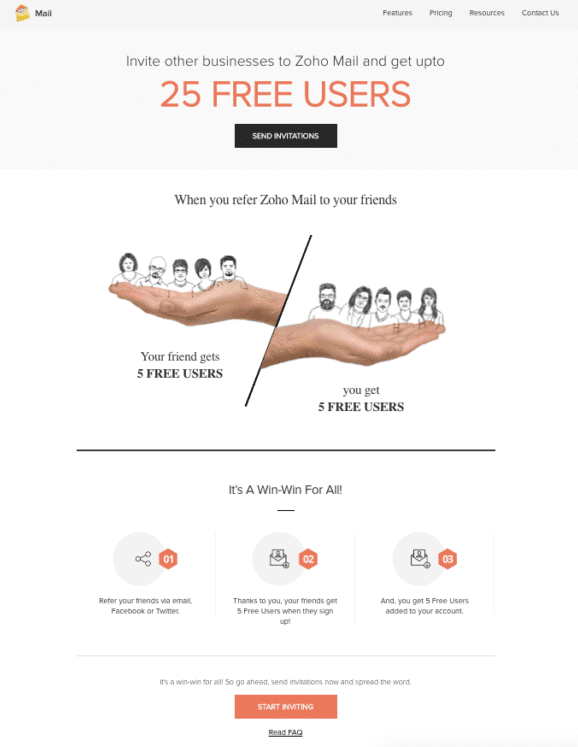
Businesses that are using the system can get five additional user accounts for free every time they refer another business. For many companies, that’s a really valuable perk. If you’re not sure what would be a good referral reward for your clients, ask them!
Here’s another positive of referral programs: when your clients get their rewards, they’ll feel positively towards you. This will help retain customers and build loyalty, and they might even feel inclined to write a nice review or say something positive about you on their social media platforms.
9. Work with influencers
When people think of influencer marketing, they tend to think of products like clothing, cosmetics, and fitness gear. However, influencer marketing also has a place in the B2B space. Simply put, an influencer is anyone who can have an affect on the behavior of their audience, such as by encouraging them to buy certain products or use certain services.
When you work with an influencer, you pay them to promote your brand on their channels. Channels like Instagram, Youtube, Facebook, and TikTok are all popular influencer marketing platforms. Influencers might share a special referral or discount code, write a review of your product, make a video of them talking about why they love it, or post a story about it.
According to Moosend, 93% of marketers use social media influencers in their marketing strategy.
The key to good influencer marketing? Find the right influencer. They must cater to an audience that’s relevant to your niche. In this context, this means someone who has influence over decision-makers at the kinds of businesses you’d like to sell to. This might mean your influencer is, themselves, a senior decision maker. If so, they’ll need to be careful to avoid conflicts of interest.
Other possibilities to consider include business coaches, business, tech, or marketing bloggers, and writers and speakers in relevant niches. Once you’ve identified someone you’d like to work with, audit them and then reach out. You can then negotiate from there.
Here’s one example of a successful B2B influencer marketing campaign:
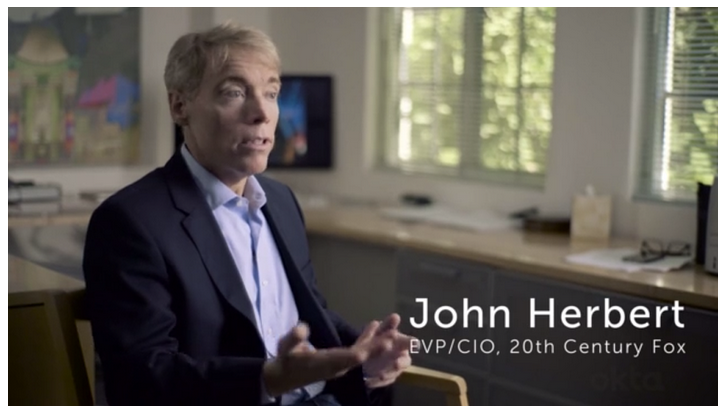
This screenshot comes from a campaign by Okta, a company that helps businesses manage access and authentication. In this campaign, various high profile users spoke out about the product and why they like it. The EVP/CIO of 20th Century Fox? That’s a good person to have endorsing your product!
Over to you…
Many marketers are confused by the idea of growth hacking, but it’s really pretty simple. It’s just about taking all the steps you can to increase the quantity and quality of leads you generate, leading ultimately to more sales.
I have outlined numerous growth hacks you can use here, but you don’t need to try all of them at once. Choose just one or two to get you started. Monitor your results and see how things go. Not all strategies will work equally well for all businesses, so be prepared to experiment and learn through trial and error. Once you’ve perfected one strategy, branch out and try something else, too.
With a bit of know-how and plenty of hard work, I’m confident you can keep growing your leads through the challenges of 2020, 2021, and beyond!


